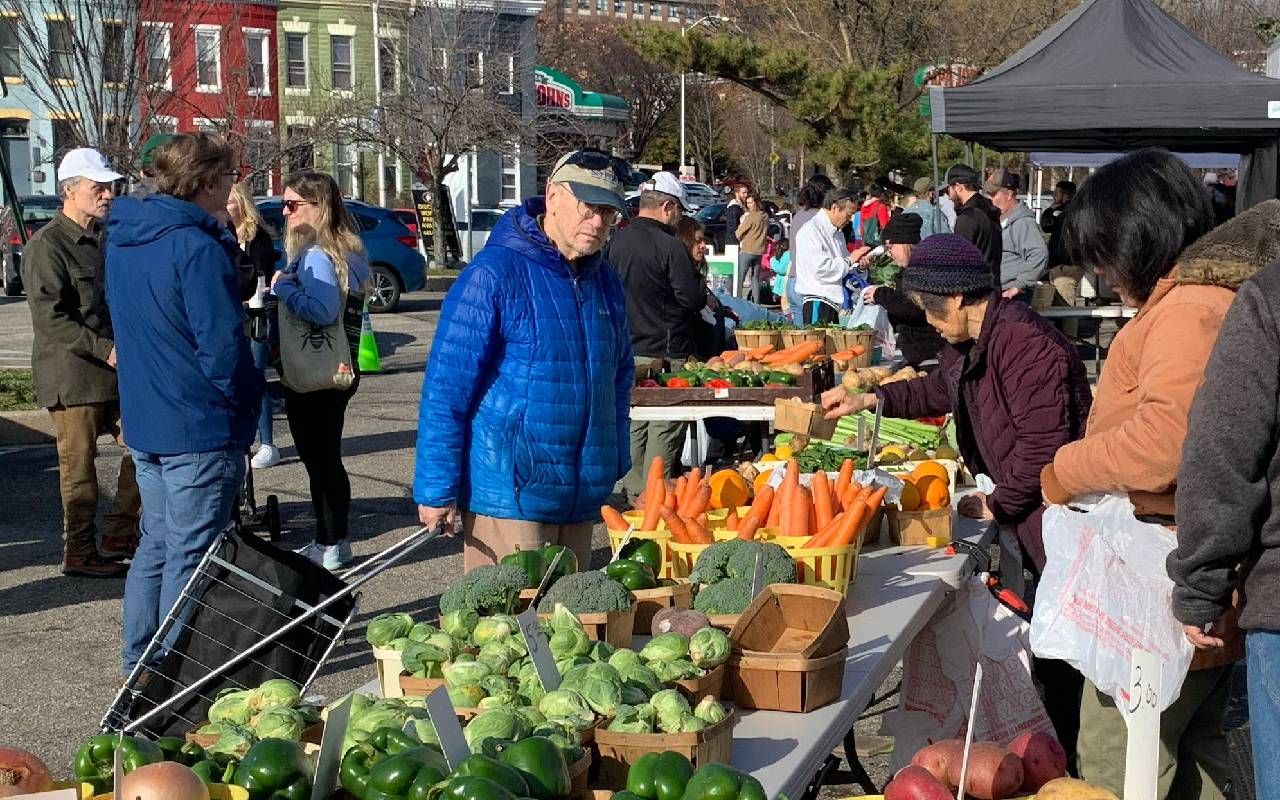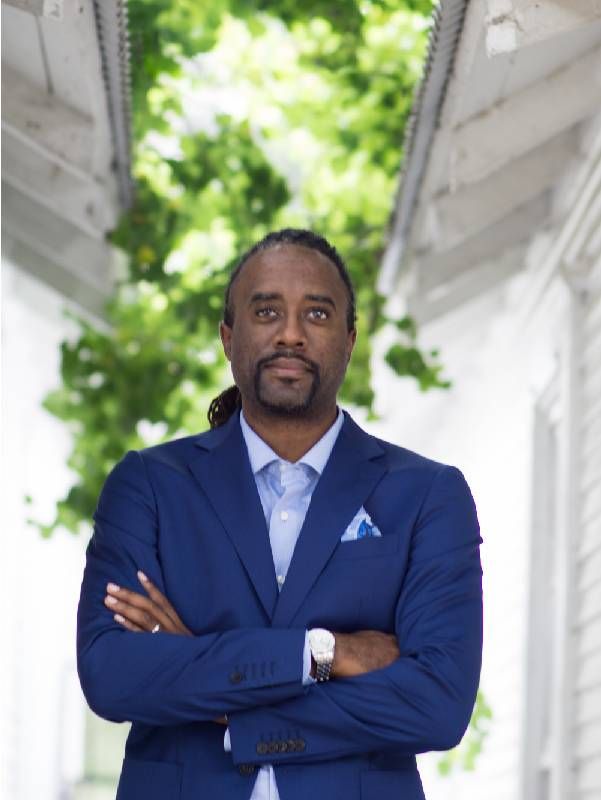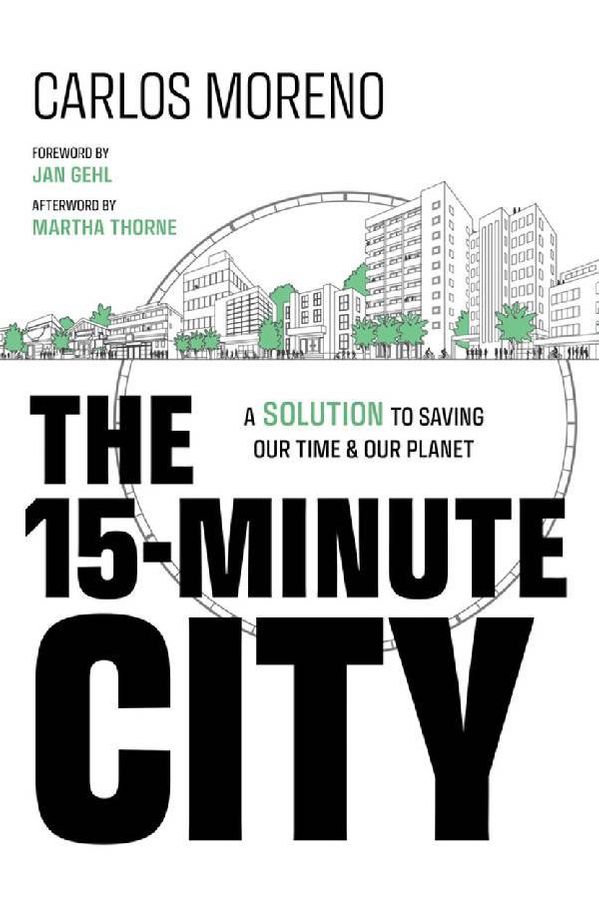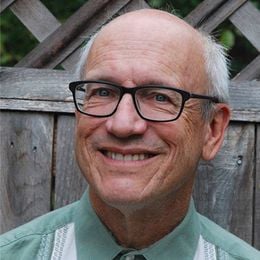The 15-Minute City Is Saving My Life
How post-pandemic communities are transforming into healthier, more welcoming, greener places
I slide my phone out of my pocket and click on the little green man. He says I've gone about 5,000 steps this morning. Yes, I've walked the dog around the block, but mostly it's been errands: six blocks to the CVS and back, a little less than that to the grocery store for milk. I dropped off one book and picked up another at the library (10 blocks). I have made multiple trips, and sometimes taken a longer route, not because I had to, but because it felt good to keep moving.

After spending 30 years in a Maryland suburb where there were not even sidewalks, my wife and I — both aged 71 — moved to Baltimore. We can meet most of our daily needs within a 15-minute walk, the car stays cool and on any given day, these short trips take me halfway to an exercise goal I try to meet several times a week.
Convenience and Exercise
Welcome to the 15-minute city, an urban planning concept that encourages planners to locate services in neighborhoods within a quarter-hour's walk, bike ride or convenient public transit option. The idea has flourished largely since the pandemic, when our lives were circumscribed and upended, and we were liberated from having to commute to work or school. Pop-up restaurants took over nearby streets. Bicycles seemed smarter for middle-distance trips than buses or taxis.
"They want to be able to walk to a park. They want to be able to walk and purchase food. They want to be able to walk to a place of worship."
In May, Wiley will publish "The 15-Minute City: A Solution to Saving Our Time and Our Planet," a comprehensive book by the idea's most recognized proponent, Carlos Moreno, an urbanist and professor at the Sorbonne Business School in France.
He advised Paris Mayor Ann Hidalgo to go all-in on villes du quart d'heure in her reelection campaign in 2020. She won handily, giving the concept its first 15 minutes of fame. The momentum hasn't faded. We'll preview Moreno's forthcoming book, talk with some of the idea's supporters in three Midwestern cities and summarize the view of detractors, including a prominent Harvard economics professor.
There's nothing magical about 15 minutes, by the way. Portland has been working toward being a 20-minute community since 2009. And Moreno, in his forthcoming book, will expand the idea to the less-dense outer ring of cities, imagining some 30-minute examples.
Four Pillars of 15-Minute Cities
In a TED talk viewed 1.5 million times, Moreno describes the four pillars of his approach. He elaborated on them to me in an email exchange:
- Ecology : “It is a green and sustainable city: more green places and more vegetation in public spaces, promoting sustainable lifestyle and mobility.”
- Proximity: “People can reach their everyday needs in decarbonized short distances by walking or biking.”
- Solidarity: “A city that creates links between people, that enables exchanges and breaks with the individualism of big cities.”
- Citizen participation: “Enables the active engagement of people in their neighborhood transformation.”
Cities Built for Cars, Not People
It's no secret that much of modern urban life is built around the automobile. For Americans, our average trip to shopping or recreation is seven to nine miles, and only about 12% of our daily needs can be satisfied in a short stroll or bike ride.
That isn't true in many big cities designed before the advent of the automobile. Growing up in Brooklyn, Antoine Bryant, who is Detroit's Director of Planning and Development, says he was "spoiled" by the proximity of nearly everything his family needed.
"I looked out the window," he told me, "and across the street was a bodega, which is like a mini-grocery store." He continues his census: "fish market, dry cleaner, meat market, pizza, another dry cleaner, liquor store, hardware store and then another bodega."
Detroit, home of the American car industry, is not going to become Brooklyn. But since taking over the city's planning department in July 2021, Bryant has focused on improving daily life in the city's many neighborhoods. And, guided by principles of the 15-minute city, he's bringing services closer to residents.
Bring Shops and Services to People
"They want to be able to walk to a park," Bryant says. "They want to be able to walk and purchase food. They want to be able to walk to a place of worship. They want to be able to safely get there, right?"

Bryant's city is working hard to make the streets safer, especially for the one-third of adult Detroiters who do not have a car. One idea is to slow cars down with more "road diets" — reducing four-lane roads to two-lane streets with a center lane for left turns and bike lanes along the curbs. Improved sidewalks and bike lanes help folks get to their destinations in one piece.
If it no longer requires cars to access necessary services — including jobs and health care, shopping and recreation — an obvious benefit will be a reduction in the exhaust spewed from tailpipes. In Cedar Rapids, Iowa, the 15-minute city's connection to reducing greenhouse gases is front and center.
Cedar Rapids' Approach
In June 2008, floods submerged 10 square miles of downtown. Twelve years later, in August 2020, an intense storm called a "derecho" walloped Cedar Rapids with 140 mph winds, leaving four dead and more than 400,000 Iowans without power. At $11 billion in damage, it's the most expensive thunderstorm event in American history. Ongoing research connects both the flood and the derecho to our warming planet.
"Residents . . . want communities that are walkable, where they can achieve their daily needs in a readily accessible fashion."
As crews struggled to repair infrastructure in 2020, Cedar Rapids officials had to communicate with, and provide services to, a population with no power and spotty cellphone reception. They soon realized that their developing climate plan needed two main themes — greenhouse gas reduction and community resilience. Both connect to a new focus on the city's version of the 15-minute city, which they call "complete neighborhoods."
Of course, in 2020, the pandemic had already thrown a wrench into all our lives. "In both of those situations [the derecho and COVID-19], we started to realize the importance of social connections as it relates to building community," Jeff Wozencraft, a planner with the city's Community Development Department tells me. "[W]e heard from residents in our engagement that they want communities that are walkable, where they can achieve their daily needs in a readily accessible fashion."
Ambitious Climate Goals
Climate action and community building have become intertwined with the complete neighborhoods plan. "Our council voted to reduce greenhouse gases 45% by 2030. So, our city manager and our leadership is committed to working toward these goals," says Wozencraft's colleague Sara Maples, who shepherds the city's climate work as sustainability program manager.
Folks can "build connections within their community and want to have their needs met locally, and it also has a climate benefit," she says
As I was researching 15-minute cities, I remembered an article I had written a few years ago about a program called Active People, Healthy Nation that was headed by the Centers for Disease Control and Prevention.
Developed to get people moving, the program centered on something called activity-friendly routes to everyday destinations. Ken Rose, who heads the program, emphasizes the science behind the snappy phrases:
Achievable Activity Targets
"At the end of the day," he says, "going for a walk — any type of physical activity that raises your heart rate — is important. Walking is something that most people do. And walking for 150 minutes a week helps us to meet the physical activity guidelines for aerobic activity."
Now, I've always been a little unsure if walking is good enough exercise to keep me healthy. And Rose points me to his program's website where it's clear that walking is just one activity, along with building muscles and more stressful aerobic workouts in a balanced plan. But I'm glad to hear him confirm the benefits of a good walk, like the ones I take for my errands.
"Over time, you can see reductions in a number of diseases, including heart disease, diabetes, cancers," Rose tells me. "And also important is that over the short term, just taking one 10-minute brisk walk, for example, reduces blood pressure, reduces symptoms of anxiety and improves sleep.
"Other long-term benefits include reductions in depression, and, for older adults, you can see improvements in balance. Obviously, we know that falls are a major driver of mortality in older adults."
Share Roads with Bikes and Walkers
Want a bigger, better brain? Keep walking.
Mary McNamara, Cleveland's Director of Aging, is well aware of these benefits. As we Zoom, I see behind her a photo of a smiling woman on a recumbent bike, a vivid symbol of McNamara's success starting a bicycling program for the city's older adults called Silver Spokes.
"Successful aging, active aging, aging in the neighborhood are all values he holds high."
In a twist I hadn't considered, McNamara, a former geriatric social worker, talked not only of encouraging folks to get on bikes, but also explained that her program trains older drivers to navigate around newly installed bike lanes, making the streets safer for everyone.
McNamara says 85% of Cleveland's residents want to age in their home, a number in line with other research. Whether it's health care, more welcoming parks or connections to social support, "what gets added to that neighborhood will only help them age in place," she says. Another plus: the city has numerous senior centers and other facilities spread throughout town connecting city services to aging community members.
McNamara says that Mayor Justin Bibb talks often about his grandmother, who lived in a tight-knit neighborhood where aging in the community was the norm. "I'm thrilled that successful aging, active aging, aging in the neighborhood are all values he holds high," McNamara says.

So, closer services, stronger communities, more green spaces, walking and biking to places we need to go and less pollution — you'd think everyone would be on board. But there is a strong backlash against the 15-minute idea that is likely to grow when Moreno's book is published in English in May. I divide the opposition into two camps.
Conspiracists See Trouble
There are those who descend from the anti-vaxxers and climate deniers, who insist that 15- minute cities are meant to trap residents in "Hunger Games"-style districts, restricting their movement and ruining their lives. USA Today's fact checkers demolish this silliness.
Then there are more considered voices, like the chair of Harvard's economics department Edward Glaeser, who worries that the 15-minute city runs counter to a city's main purpose: mixing different populations and encouraging geographic, economic and social mobility.
You'll make your own assessment of his arguments. But I prefer the optimism of Carlos Moreno: "The momentum behind this concept is indicative of a significant shift in how we understand and shape our urban environments for future generations," he says when I ask about the doubters.
"The most important thing for me, and it's the only thing that matters, is that we have mayors from all political backgrounds across the world . . . who are committed to this path."
And now, I've got to head out to buy some vegetables for my stir fry tonight. Back in a jiff.


